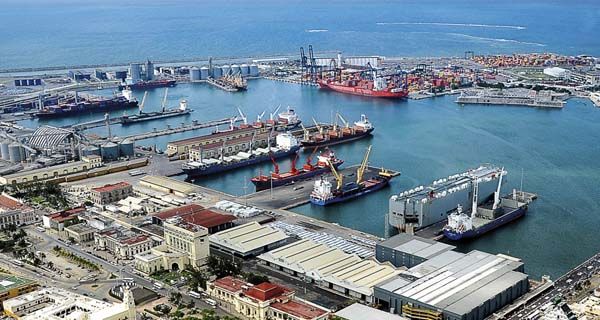Veracruz, Mexico - A new 35-billion-peso port project in Veracruz is progressing and set to begin operations at the end of June. The project also includes the construction of Latin America's longest breakwater, measuring 4.3 kilometers long and coming at a cost of around 3 billion pesos (US $160 million).
The CEO of the Veracruz Port Authority told the newspaper Milenio that the new port will increase capacity from 28 million tonnes per year to 95 million tonnes.
Due to budget cuts, Juan Ignacio Fernández Carbajal explained, the project's funding model had to be changed and as a result most of the 35 billion pesos (US $1.8 billion) came from the private sector.
The federal government and port authority only contributed 7 billion pesos, he explained.
Fernández also said that the specifications of the current port - opened in 1902 by then-president Porfirio Díaz - made it impossible for it to be re-purposed to meet today's requirements. "... The current port couldn't be extended ... [because] it was built ... for 60-meter vessels and now we're talking about ships up to 400 meters," he said.
The new facility will have five terminal buildings and an estimated 35 berths.
The chief engineer of the port authority, Francisco Liaño, said that land reclaimed from the sea will this month be transferred to the first two concessionaires - IEnova and Pinfra - which will allow them to begin construction on their terminals.
In May, the companies Grupo Gramosa and Grupo Logra will take possession of their sections of the development to build their terminals.
A fifth container ship terminal will be operated by Hutchison Ports. The company has invested US $450 million in the project and it will be the first tenant to operate there. Its terminal is expected to receive the new port's first ship on June 30.
That event will be the culmination of a long process that started two years ago to prepare the maritime site to host the new facility. The new port is being built in an area bordering the Veracruz Reef System National Park.
As a result, the port authority had to relocate any parts of the reef system and resident marine life that extended into the port area prior to the commencement of any other work.
To complete the task, 153 local fishermen first completed courses in diving and techniques to rescue coral colonies. In total, 48,000 marine organisms were relocated 25 kilometers away from where they were found. The relocated creatures included porcupine fish, sea cucumbers and sea anemones.
Two years later, 85% of the relocated species are estimated to be still alive, exceeding a 70% survival rate demanded by environmental authorities.
Source: Milenio


